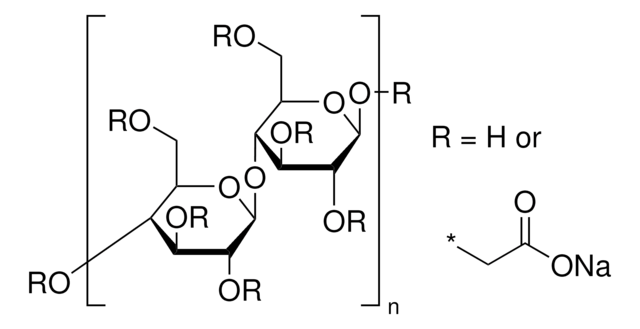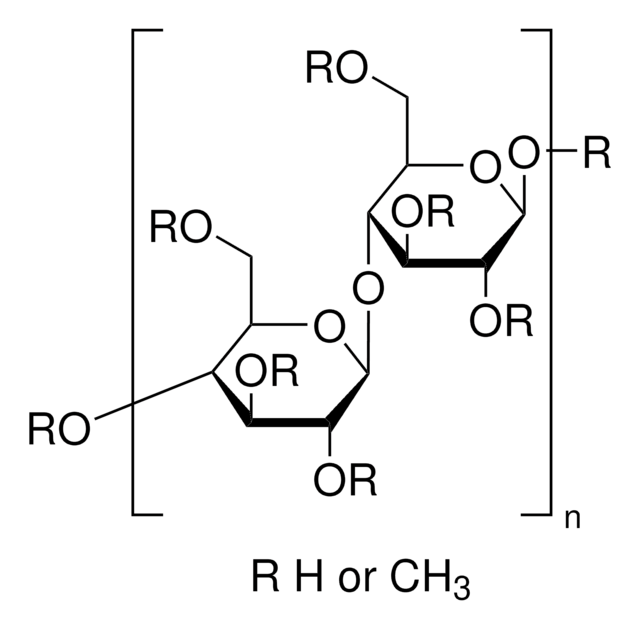C9481
Carboxymethylcellulose sodium
meets USP testing specifications, Medium viscosity
Synonim(y):
Carboxymethylcellulose sodium salt, Sodium carboxymethylcellulose
About This Item
Polecane produkty
agency
USP/NF
meets USP testing specifications
Poziom jakości
Próba
6.5-9.5% anhydrous basis (Sodium)
Postać
powder
kolor
light yellow
pH
(10 g/L68 °F neutral)
lepkość
400-800 cP, 2 % in H2O(25 °C)(lit.)
mp
> 300.05 °C ((> 572.09 °F ))
rozpuszczalność
water: soluble
InChI
1S/C6H12O6.C2H4O2.Na/c7-1-3(9)5(11)6(12)4(10)2-8;1-2(3)4;/h1,3-6,8-12H,2H2;1H3,(H,3,4);
Klucz InChI
DPXJVFZANSGRMM-UHFFFAOYSA-N
Szukasz podobnych produktów? Odwiedź Przewodnik dotyczący porównywania produktów
Opis ogólny
Zastosowanie
Inne uwagi
Kod klasy składowania
11 - Combustible Solids
Klasa zagrożenia wodnego (WGK)
WGK 1
Temperatura zapłonu (°F)
Not applicable
Temperatura zapłonu (°C)
Not applicable
Środki ochrony indywidualnej
Eyeshields, Gloves, type N95 (US)
Choose from one of the most recent versions:
Masz już ten produkt?
Dokumenty związane z niedawno zakupionymi produktami zostały zamieszczone w Bibliotece dokumentów.
Klienci oglądali również te produkty
Nasz zespół naukowców ma doświadczenie we wszystkich obszarach badań, w tym w naukach przyrodniczych, materiałoznawstwie, syntezie chemicznej, chromatografii, analityce i wielu innych dziedzinach.
Skontaktuj się z zespołem ds. pomocy technicznej

